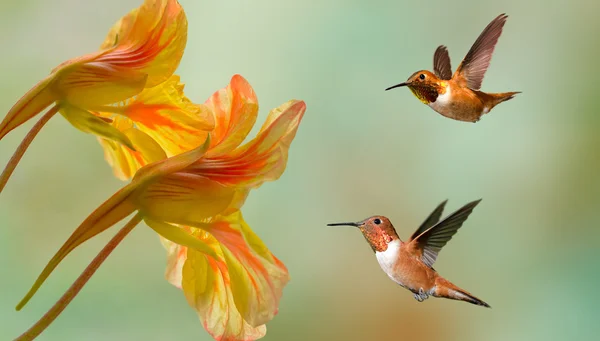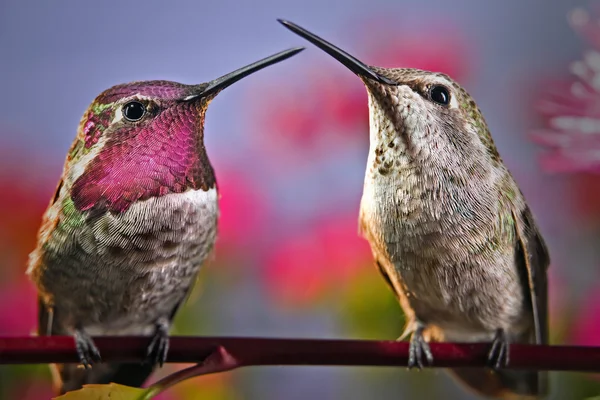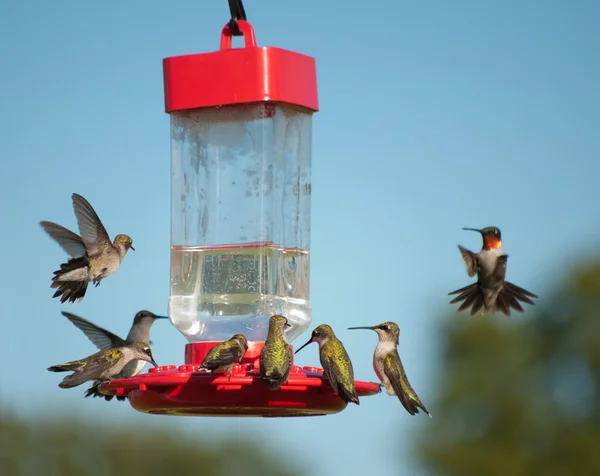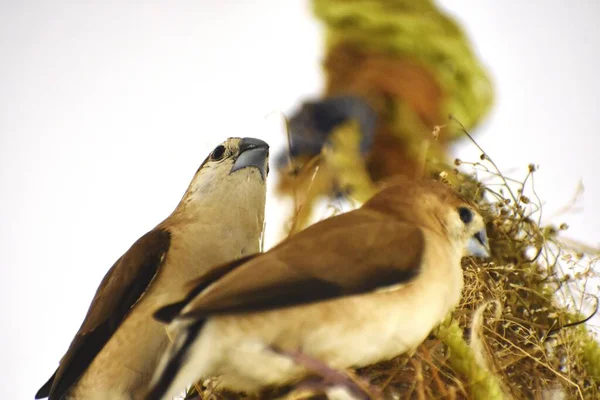When do hummingbirds leave Missouri? Typically, these enchanting creatures begin their migratory journey southward around late September, seeking warmer climates to spend the winter months.
In the heartland of America, where the breeze carries whispers of the seasons, there exists a delicate dance between nature and time. Missouri, a state known for its rolling hills and vibrant landscapes, hosts a mesmerizing spectacle each year as the days grow shorter and autumnal hues paint the scenery.
Amidst this enchanting tapestry, a question lingers like a fleeting melody: when do hummingbirds bid farewell to the Show-Me State? These iridescent avian wonders, with wings that beat in sync with the changing seasons, embark on a mysterious journey that captures the imagination and leaves spectators in awe.
Join us as we unravel the mystery of when these tiny, jewel-toned creatures take flight from Missouri, leaving behind a trail of wonder and anticipation in their ephemeral wake.

When do hummingbirds leave Missouri?
Exploration of When Hummingbirds Leave Missouri:
Migration Patterns and Timing
Hummingbirds, known for their incredible agility and vibrant plumage, follow a predictable migration pattern in Missouri. As summer transitions to fall, these diminutive birds prepare to leave the state, prompted by instinctual cues such as daylight duration and temperature changes.
Late Summer Farewell
Late August marks the initial stages of hummingbirds’ departure from Missouri. During this period, enthusiasts witness a flurry of activity as the birds fuel up on nectar, a crucial energy source for their long journey ahead. Gardeners often notice a decline in hummingbird visits as the farewell process intensifies.
September Departure
September is a key month for hummingbird migration in Missouri. As the days continue to shorten and nights become cooler, the tiny travelers become less frequent visitors to feeders and flower gardens. Observers may notice a sense of urgency in the hummingbirds’ behavior as they prepare for their extended flight southward.
Environmental Influences
Environmental factors, including weather conditions and the availability of food sources, play a role in influencing the precise timing of hummingbird departure. Mild autumns may extend their stay, while early cold snaps could hasten their exit. Awareness of these factors enhances our understanding of the delicate balance that governs the timing of their migration.
Ensuring a Smooth Departure
For those captivated by the presence of hummingbirds, ensuring a smooth departure is essential. Maintaining well-stocked feeders with a sugar-water solution can provide these tiny travelers with a final refueling station before their departure. This simple act also contributes to the well-being of these remarkable birds during a critical phase of their life cycle.
Species of Hummingbirds in Missouri
Common Hummingbird Species in the Region
In Missouri, an array of enchanting hummingbird species graces our landscapes, captivating both seasoned birdwatchers and casual observers. Among the most frequently spotted are the Ruby-throated Hummingbird, Anna’s Hummingbird, and Black-chinned Hummingbird. These delicate creatures, adorned with vibrant iridescent plumage, add a splash of color to our gardens and wooded areas.
Characteristics and Behaviors of Missouri Hummingbirds
Missouri’s hummingbirds, characterized by their diminutive size and remarkable agility, engage in fascinating behaviors. These aerial acrobats can hover effortlessly, their wings beating at incredible speeds. Their iridescent feathers shimmer in the sunlight, a captivating sight for any observer. Known for their territorial nature, these tiny birds engage in aerial skirmishes, defending feeding territories with remarkable tenacity.
Importance of Migration for These Species
Migration holds profound significance for Missouri’s hummingbirds, a phenomenon crucial for their survival. As temperatures drop and food sources dwindle, these remarkable birds embark on impressive journeys, some spanning thousands of miles.
The instinctual need to migrate ensures access to abundant nectar and insects, sustaining them during the colder months. The interconnectedness of ecosystems relies on the perseverance of these winged travelers, highlighting the delicate balance of nature.
Hummingbird Migration Patterns
General Overview of Hummingbird Migration
Hummingbird migration is a marvel of nature, an intricate journey that spans continents and showcases the resilience of these tiny creatures. The annual migration, driven by a combination of instinct and environmental cues, is a testament to their remarkable adaptability and survival strategies.
Factors Influencing Migration
Climate and Weather Conditions
Hummingbirds, attuned to nature’s rhythms, embark on migration in response to changing climates and weather conditions. As temperatures drop and resources become scarce, these agile birds navigate vast distances, relying on favorable winds and atmospheric cues to guide their journey.
Food Availability
The availability of nectar-rich flowers and insects plays a pivotal role in hummingbird migration. The need for sustenance propels them across borders, seeking regions abundant with blooming flowers and thriving insect populations. Their precise navigation ensures they reach destinations with ample food resources.
Daylight Changes
The lengthening or shortening of daylight serves as a biological trigger for hummingbirds. As days grow shorter in their breeding grounds, these birds sense the impending seasonal changes and commence their migratory flights. Daylight variations act as a reliable cue, synchronizing their movements with the Earth’s natural rhythms.
Understanding the Role of Instinct in Migration
Instinct, deeply embedded in the genetic makeup of hummingbirds, guides every aspect of their migration. This inherent knowledge directs them to navigate complex landscapes, cross geographical barriers, and find optimal habitats.
The seamless coordination of their actions, driven by a millennia-old instinct, ensures the successful completion of their awe-inspiring migratory journeys.
Timing of Hummingbird Migration in Missouri

Seasonal Changes Affecting Migration
The timing of hummingbird migration in Missouri is intricately tied to seasonal shifts, marking a delicate dance between nature’s cues and the birds’ responses.
As summer transitions to fall, a decrease in daylight triggers a biological imperative for these agile creatures to embark on their migratory journeys. The ebb and flow of temperatures and the changing floral landscape act as synchronized prompts for their departure.
Historic Data on Hummingbird Migration in Missouri
Historic data on hummingbird migration in Missouri provides valuable insights into the patterns and trends of these remarkable journeys. Observations over the years reveal consistent migration windows, showcasing the dependability of these tiny travelers.
This historical perspective aids researchers and enthusiasts alike in anticipating and celebrating the annual spectacle of hummingbird migration in the region.
Research Studies and Tracking Methods
Advancements in research studies and tracking methods have allowed scientists to delve deeper into the intricacies of hummingbird migration. Cutting-edge technologies, such as radio telemetry and banding programs, provide a wealth of information about specific routes, stopover points, and the overall dynamics of their journeys.
These studies contribute to our understanding of the factors influencing migration and aid in conservation efforts to ensure the continued success of these awe-inspiring migrations.
Environmental Factors Influencing Departure
Temperature and Weather Conditions
Hummingbirds, finely attuned to environmental nuances, initiate their departure from Missouri in response to shifting temperatures and weather conditions. As the region transitions from the warmth of summer to cooler autumn days, these delicate creatures sense the impending changes.
Favorable weather, marked by clear skies and supportive winds, becomes a catalyst for their migratory journey, ensuring a safer and more energy-efficient passage.
Availability of Nectar and Insects
The departure of hummingbirds hinges on the availability of vital resources—nectar-rich flowers and abundant insects. Before embarking on their long flights, these tiny travelers strategically time their migration to coincide with peak floral bloom and insect activity.
The need for sustenance propels them towards regions where these resources are plentiful, ensuring their well-being throughout the arduous journey.
Impact of Changing Daylight Hours
The changing daylight hours play a pivotal role in signaling the departure of hummingbirds. As the days gradually shorten, triggering a biological response, these agile birds interpret the diminishing daylight as a cue to commence their migratory flights.
This instinctual reaction ensures synchronization with the natural rhythms of the environment, allowing for a harmonious departure as they navigate towards more hospitable regions.
The Role of Hummingbird Feeders
Importance of Providing Food for Migrating Hummingbirds
Hummingbird feeders play a crucial role in supporting migrating hummingbirds, offering a lifeline during their arduous journeys. As these tiny travelers pass through Missouri, providing a readily available source of nectar becomes essential.
Hummingbird feeders serve as vital fueling stations, ensuring these agile birds have the energy reserves needed to sustain their flights and reach their distant destinations.
Proper Maintenance of Feeders During Migration Season
During the migration season, proper maintenance of hummingbird feeders is paramount. Regular cleaning and replenishing of nectar are essential tasks to prevent the growth of harmful molds and bacteria.
Maintaining a clean and healthy feeding environment not only supports the well-being of the hummingbirds but also encourages their return visits, creating a reliable and sustainable resource for these remarkable creatures.
Impact on Local Hummingbird Populations
The strategic placement and care of hummingbird feeders can have a positive impact on local hummingbird populations. By providing supplementary food sources, individuals and communities contribute to the overall well-being of these birds, particularly during periods of resource scarcity.
This localized support fosters a healthier habitat, potentially enhancing breeding success and the resilience of hummingbird populations in the region.
Citizen Science and Community Engagement
Involvement of Local Communities in Tracking Migration
The migration of hummingbirds in Missouri becomes a community affair, with local residents actively participating in tracking these fascinating journeys. By observing and reporting hummingbird sightings, individuals contribute valuable data that aids researchers in understanding migration patterns.
This collective effort showcases the power of community engagement in preserving and appreciating the natural wonders that unfold in our midst.
Citizen Science Projects Related to Hummingbirds in Missouri
Numerous citizen science projects centered around hummingbirds thrive in Missouri, fostering a sense of shared responsibility for these remarkable creatures. From organized hummingbird counts to collaborative data collection initiatives, citizens play a pivotal role in advancing our knowledge of these tiny travelers.
These projects not only contribute to scientific understanding but also create a deeper connection between communities and the avian wonders gracing their local landscapes.
Educational Programs and Outreach Initiatives
Educational programs and outreach initiatives further enhance community engagement by providing valuable information about hummingbirds and their conservation. Workshops, seminars, and community events offer platforms for residents to learn about the importance of preserving hummingbird habitats, the role of native plants, and responsible feeder maintenance.
Through these initiatives, communities become stewards of their local ecosystems, fostering a harmonious coexistence with the enchanting hummingbird population.
Conservation Efforts
Preservation of Natural Habitats for Hummingbirds
Conservation efforts for hummingbirds in Missouri extend to the preservation of their natural habitats. Protecting and restoring native ecosystems ensures that these tiny wonders have access to the diverse array of flowers and insects crucial for their survival.
By safeguarding their habitats, individuals and organizations contribute to maintaining the delicate balance of the environment that supports the thriving hummingbird population.
Planting Hummingbird-Friendly Gardens
One impactful way individuals can contribute to hummingbird conservation is by planting hummingbird-friendly gardens. Selecting native plants with vibrant, nectar-rich flowers provides essential food sources for these birds.
The creation of welcoming garden spaces not only supports hummingbirds but also enhances biodiversity, creating havens that benefit the broader ecosystem. This simple yet powerful action empowers individuals to play a direct role in preserving these captivating avian species.
The Role of Individuals and Organizations in Conservation
The collective efforts of individuals and organizations play a pivotal role in the conservation of hummingbirds. By advocating for habitat protection, participating in community initiatives, and supporting research and education programs, both individuals and organizations contribute to the long-term well-being of these remarkable birds.
This collaborative approach ensures that hummingbirds continue to thrive, captivating future generations with their aerial displays and vibrant plumage.
Challenges and Threats
Human-Induced Threats to Hummingbirds
Hummingbirds in Missouri face human-induced threats that jeopardize their well-being. Urbanization, habitat loss, and the use of pesticides pose significant challenges to their survival.
As natural spaces give way to development, and chemicals disrupt their food sources, the delicate balance sustaining hummingbird populations is at risk. Awareness of these threats is crucial for fostering responsible practices that minimize harm to these captivating avian species.
Climate Change and Its Impact on Migration
Climate change presents a formidable challenge to hummingbird migration in Missouri. Altered weather patterns, shifting bloom times, and unpredictable resource availability disrupt the synchronized timing of migration.
These changes pose threats to the survival of these tiny travelers, as they must adapt to an environment undergoing rapid transformations. Mitigating climate change impacts is essential to safeguard the intricate migratory patterns and habitats crucial for hummingbirds.
The Need for Awareness and Proactive Measures
Addressing the challenges and threats faced by hummingbirds necessitates widespread awareness and proactive measures. Educating communities about the impact of human activities, advocating for sustainable urban development, and promoting responsible gardening practices are crucial steps.
By fostering a collective understanding of the threats posed by climate change, individuals and communities can take proactive measures to preserve the habitats and conditions that sustain hummingbird populations in Missouri.

FAQs
When do hummingbirds typically leave Missouri?
Hummingbirds in Missouri usually begin their migration south in the late summer or early fall. The exact timing can vary, but it’s generally around September.
Why do hummingbirds leave Missouri?
A: Hummingbirds migrate to avoid the colder temperatures of winter and to find more abundant food sources. In Missouri, the decreasing temperatures and diminishing flower nectar supply prompt hummingbirds to embark on their journey south.
How far do hummingbirds travel during migration?
Hummingbirds can travel impressive distances during migration. The exact distance varies by species, but some hummingbirds that visit Missouri may travel hundreds or even thousands of miles to reach their wintering grounds in Central America or Mexico.
Is it true that hummingbirds migrate at night?
Yes, hummingbirds are known to migrate during the night. They use the stars for navigation and tend to fly for long hours to cover significant distances.
Can I attract hummingbirds before they leave Missouri for migration?
Absolutely! Providing a food source, such as sugar water in hummingbird feeders, can attract hummingbirds to your yard before they begin their migration. It’s important to maintain a clean and filled feeder to support them as they prepare for their journey.
When should I take down my hummingbird feeders in Missouri?
It’s recommended to keep hummingbird feeders up for a couple of weeks after you observe the last hummingbird in your area. Some stragglers may be passing through, and providing them with nourishment can be crucial before they continue their migration.
Do all hummingbirds leave Missouri at the same time?
No, hummingbirds don’t leave en masse. The timing of migration can vary among individuals and species. Some may start earlier, while others linger a bit longer. Monitoring local sightings can give you a better idea of when hummingbirds are leaving your specific area.
How can I help support hummingbirds during their migration?
Besides keeping your feeders filled, planting late-blooming flowers that are rich in nectar can provide additional food sources for hummingbirds. Creating a hospitable environment with shelter and perches can also assist these tiny travelers during their journey.
Do hummingbirds return to the same location in Missouri after migration?
Yes, many hummingbirds exhibit site fidelity and may return to the same area or even the same feeder in Missouri the following spring. Establishing a consistent and reliable food source in your yard can encourage their return.
What are some signs that hummingbirds are about to leave Missouri?
As they prepare for migration, hummingbirds may start to consume more food, display increased aggression at feeders, and exhibit restlessness. Observing these behaviors can indicate that migration is imminent.
Conclusion
In conclusion, the departure of hummingbirds from Missouri marks a poignant moment in the natural rhythm of the region. As these vibrant and agile birds embark on their migratory journey, it symbolizes the changing seasons and the cyclical patterns of nature.
Observing the timing of their departure not only provides valuable insights into the environmental cues that guide their migration but also underscores the interconnectedness of all living organisms with their environment.
The departure of hummingbirds from Missouri serves as a reminder of the delicate balance that exists in the natural world and invites us to appreciate and respect the intricate dance of life that unfolds with each passing season.

